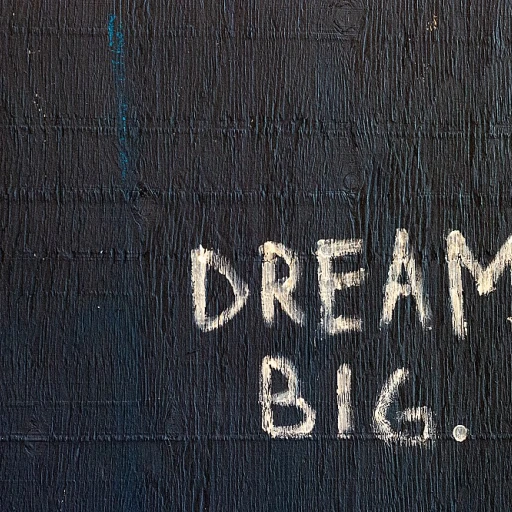
Understanding the Impact of Employee Appreciation
The Power of Appreciation in the Workplace
Employee appreciation is not just a feel-good initiative; it's a crucial component of a thriving company culture. When employees feel valued, their motivation and engagement levels rise, which can lead to increased productivity and reduced turnover. Acknowledging the hard work and dedication of team members helps in building a positive work environment where people are eager to contribute and collaborate.
Recognizing employees' efforts can take many forms, from simple verbal acknowledgments to more elaborate appreciation gifts. The key is to ensure that appreciation is genuine and consistent. When employees see that their contributions are noticed and appreciated, they are more likely to stay committed to their roles and the company.
Why Employee Appreciation Matters
Appreciation is a powerful tool for fostering loyalty and enhancing employee retention. It helps bridge the gap between management and staff, creating a sense of unity and shared purpose. By celebrating employee achievements, companies can cultivate a sense of belonging and encourage team members to take pride in their work.
Moreover, appreciation can be a catalyst for team building. When team members see their peers being recognized, it inspires them to strive for excellence and fosters a supportive atmosphere. This not only improves individual performance but also strengthens the team as a whole.
To learn more about how appreciation can enhance employee retention, you can explore cultivating loyalty to enhance employee retention.
Themed Appreciation Days
The Power of Theme in Employee Recognition
One key way to foster employee appreciation is through themed appreciation days. These special days of celebration can break the monotony of regular work routines and show team members just how much they are valued. By incorporating a unique theme, the company culture becomes vibrant, fun, and engaging, which can significantly enhance employee engagement and boost morale.
Imagine transforming a typical Friday in March into a creative appreciation day. Not only will it be a refreshing break, but your team will also anticipate and eagerly participate in celebrating their achievements in a new way. Here are some ways to design a successful themed appreciation day:
- Choose a Theme: Select a theme that resonates with your team. It could align with community events, national holidays, or even popular culture phenomena.
- Personalize Decorations: Decorating the office according to the theme can make the staff appreciation day more festive and exciting.
- Plan Fun Activities: Organize team-building activities that not only align with the theme but also encourage teamwork and strengthen relationships among team members.
- Creative Appreciation Gifts: Consider gifting themed appreciation gifts to reward employees. This could range from edible treats to novelty items that fit the theme.
- Recognize Achievements: Take the time to acknowledge exemplary efforts publicly. This reinforces the impact of employee recognition.
Such theme-based recognition days not only serve as a reward for hard work but also inject an element of play into the work day environment. When people feel that their contributions are truly appreciated, they are more likely to remain motivated and committed to the organization's goals. This approach to recognition aligns with the concept of motivating beyond simple rewards and punishments—a critical element in driving sustainable performance and team building.
Personalized Recognition Strategies
Tailoring Recognition to Individual Preferences
In many organizations, generic rewards and recognition can sometimes miss the mark, leaving employees feeling undervalued. To truly make employees feel appreciated, it's important to embrace personalized recognition strategies. Understanding each team member's unique interests and preferences can inform meaningful rewards and enhance overall employee engagement. Employee recognition can be as simple as remembering personal milestones such as birthdays or work anniversaries and acknowledging them with a personalized appreciation gift. Such gestures can foster a supportive company culture where employees feel valued and understood. Personalization doesn't stop at gifts; consider tailoring appreciation ideas to individual achievements. For instance, set aside time during an appreciation day to publicly celebrate an employee's hard work in a way that resonates best with them. You might arrange for a custom token of appreciation or a special team lunch featuring their favorite cuisine. Another way to tailor recognition is by aligning appreciation strategies with employees' career goals. This could involve providing team members with development opportunities or rewarding them with experiences that enhance their skills and career growth. By acknowledging both personal and professional aspirations, companies can cultivate a rewarding environment where employees feel genuinely appreciated. For more practical ideas on creating a personalized employee recognition program, you might want to explore some examples of development objectives for employee retention. Taking the time to appreciate your staff in a way that aligns with their personal preferences can significantly boost morale and build stronger team connections.Incorporating Peer Recognition
Fostering a Culture of Recognition Among Peers
In the quest to create a rewarding workplace, the value of peer recognition cannot be overlooked. Encouraging employees to acknowledge each other's contributions can foster camaraderie and a sense of community. Acknowledgment from team members not only enhances morale but also reinforces a culture where everyone feels valued and appreciated. To successfully integrate peer recognition into your company’s culture, consider these strategies:- Encourage Informal Recognition: Promote a culture where employees feel comfortable recognizing each other's efforts. This can be as simple as a verbal "thank you" or a quick note of appreciation. Small gestures like these can significantly impact staff appreciation.
- Create a Recognition Platform: Implement a platform or forum where employees can easily and publicly recognize the efforts of their colleagues. This could be a dedicated channel on your company's intranet or an office bulletin board where team members post appreciation notes and share success stories.
- Host Regular Appreciation Events: Establishing regular events such as an "Appreciation Day" or "Recognition Week" dedicated to celebrating employees encourages peer acknowledgment. These events can include activities where team members share appreciation ideas or highlight exceptional accomplishments in a relaxed and fun setting.
- Incorporate Peer Recognition into Performance Reviews: Consider integrating peer feedback into your employee performance reviews. This approach not only adds another layer of accountability but also ensures that hard work and team contributions do not go unnoticed.
Leveraging Technology for Appreciation
Infusing Technology in Appreciation
In today's digital age, leveraging technology for employee appreciation can transform the way companies celebrate employee achievements. By integrating innovative technological solutions, businesses can create memorable experiences for their team members, making them feel valued at work. Using digital platforms, companies can simplify the process of acknowledging efforts and offering token gifts or rewards. This not only saves time but also ensures that appreciation is frequent and visible across the team. A few examples of technology-driven appreciation ideas include:- Online Recognition Platforms: These platforms allow team members to give and receive recognition virtually. They can share praises, badges, and even appreciation gifts, fostering a culture of peer recognition.
- Digital Gift Cards: As companies have become more geographically diverse, digital gift cards offer a convenient way to reward employees. They can be personalized for a specific day, such as an appreciation day, or aligned with particular team achievements.
- Automated Celebratory Messages: Set up automated systems in the office to send celebratory messages on employee anniversaries or milestones. This ensures no important event is missed and reinforces the feeling of being appreciated.
Measuring the Effectiveness of Appreciation Programs
Evaluating Appreciation Program Success
Effectively measuring the result of employee appreciation initiatives is crucial in determining their success and how they contribute to employee engagement and retention. Here’s how companies can gauge the effectiveness of their appreciation programs:- Feedback and Surveys: Regularly collecting feedback from employees can provide insights into how team members feel about the recognition they've received. Anonymous surveys can ensure honest opinions, enabling the company to make necessary adjustments to the appreciation ideas implemented.
- Employee Retention Rates: Monitoring changes in employee turnover rates can serve as a direct indicator of the success of appreciation strategies. If team members feel valued and rewarded, they are more likely to remain with the company, enhancing overall stability.
- Engagement Levels: Employee engagement surveys can shed light on how motivated and committed staff are. High engagement often correlates with effective recognition, as employees feel their hard work is acknowledged.
- Participation in Appreciation Events: The level of participation in themed appreciation days or appreciation week activities can reflect the overall enthusiasm and impact of these events. Higher participation often indicates that employees perceive these events as genuine gestures of gratitude.
- Team Cohesion and Collaboration: Assess the cultural shifts within the office. A strong team culture and enhanced collaboration might result from well-implemented appreciation efforts. When employees consistently participate in peer recognition and team-building activities, it enhances the collective company culture.
- Cost-Benefit Analysis: Compare the costs involved in organizing various appreciation activities with the tangible benefits such as increased productivity, reduced absenteeism, and enhanced morale among staff. Successful recognition programs will show a favorable return on investment.












